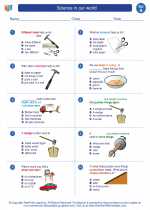Temperature Regulation
Temperature regulation is the process by which an organism maintains a stable internal body temperature despite changes in the external environment. This is essential for the proper functioning of bodily processes and overall health. In humans, the normal body temperature is around 98.6°F (37°C).
How is Body Temperature Regulated?
The human body regulates its temperature through a process called thermoregulation. This involves the coordination of various physiological mechanisms to maintain a constant internal temperature. The hypothalamus, located in the brain, plays a key role in regulating body temperature by responding to temperature changes and initiating appropriate responses.
Key Processes Involved in Temperature Regulation:
- Thermogenesis: This is the production of heat within the body, primarily through muscle contractions and metabolic processes.
- Vasodilation and Vasoconstriction: Blood vessels near the skin surface dilate to release heat and constrict to conserve heat, helping to regulate body temperature.
- Sweating: The evaporation of sweat from the skin helps to cool the body when it becomes overheated.
- Shivering: In response to cold temperatures, muscles may contract rapidly to generate heat and warm the body.
Factors Affecting Temperature Regulation
Several factors can influence the body's ability to regulate its temperature:
- External Temperature: Exposure to hot or cold environments can impact the body's temperature regulation mechanisms.
- Illness or Infection: Fever is a common response to infection, and it reflects the body's attempt to fight off pathogens by raising its internal temperature.
- Physical Activity: Exercise and physical exertion can lead to an increase in body temperature due to heightened metabolic activity.
- Hormonal Changes: Hormones such as adrenaline can affect thermoregulation by influencing metabolic rate and blood flow.
Study Guide
Here are some key points to remember when studying temperature regulation:
- Define thermoregulation and explain its importance in maintaining overall health.
- Describe the role of the hypothalamus in temperature regulation.
- Identify and explain the processes involved in temperature regulation, such as thermogenesis, vasodilation, vasoconstriction, sweating, and shivering.
- Discuss how external factors, illness, physical activity, and hormonal changes can impact the body's ability to regulate its temperature.
◂Science Worksheets and Study Guides First Grade. Science in our world

 Worksheet/Answer key
Worksheet/Answer key
 Worksheet/Answer key
Worksheet/Answer key
 Worksheet/Answer key
Worksheet/Answer key
 Vocabulary/Answer key
Vocabulary/Answer key
 Vocabulary/Answer key
Vocabulary/Answer key
